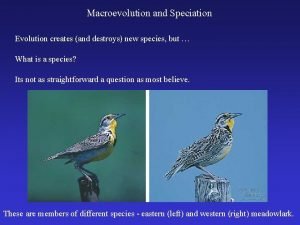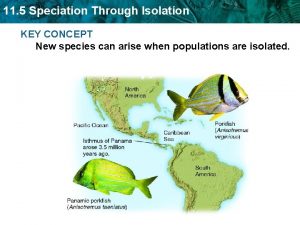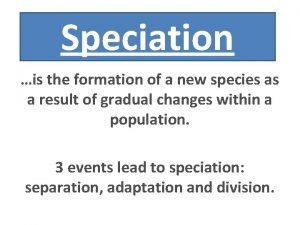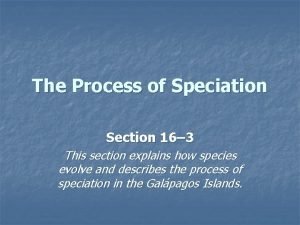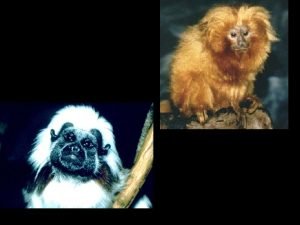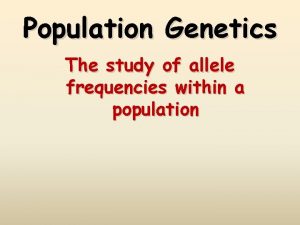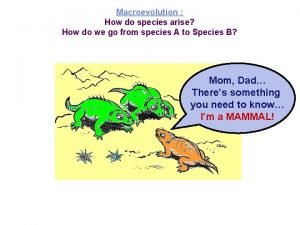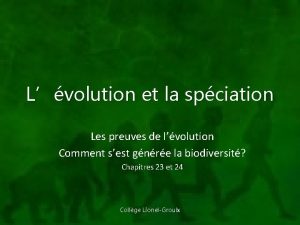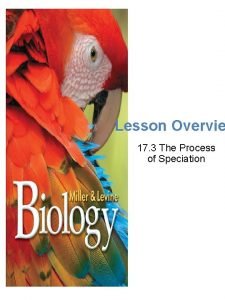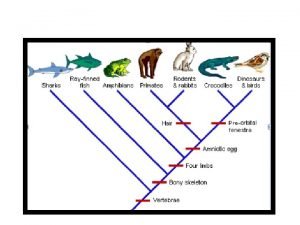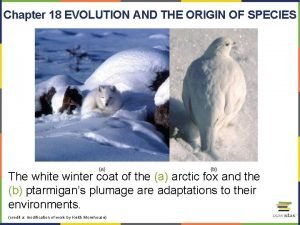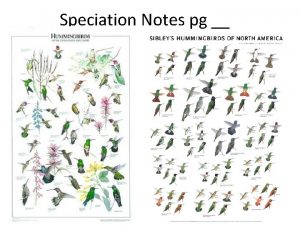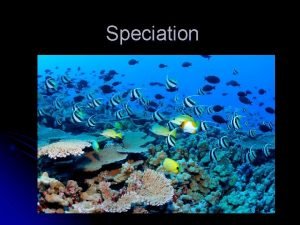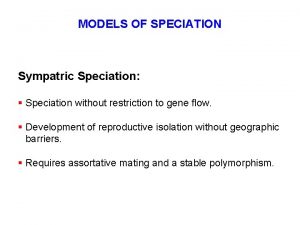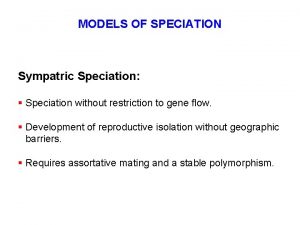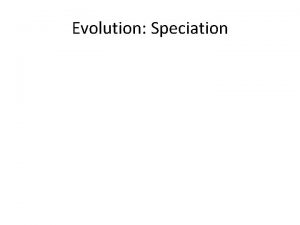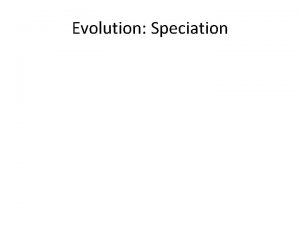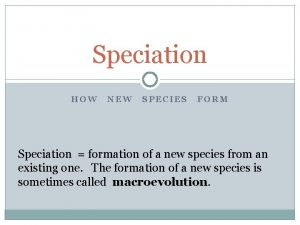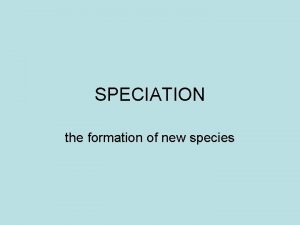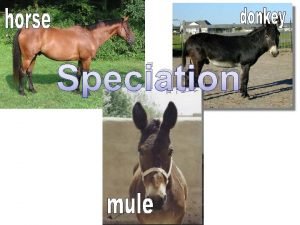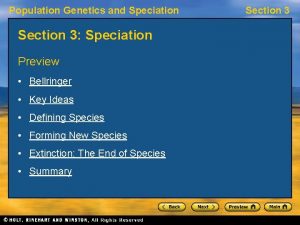Isolation Leading to Speciation Speciation formation of two

















- Slides: 17

Isolation Leading to Speciation… Speciation - formation of two species from one species because of divergent natural selection

Difference between Geographic and Reproductive Isolation Geographic Reproductive • Physically separated for long • Mutation and natural periods of time selection • Physical barrier • Divergent evolution • Volcano/earthquake • Change enough to not be able to interbreed • Wind/water Can take hundreds of years… if the species is quickly reproducing. Otherwise, it takes tens of thousands to millions of years!

Geographic Isolation …can lead to reproductive isolation, divergence of gene pools and speciation.

Convergent evolution • Organisms have similar adaptations to similar environments, e. g. whales and sharks, bats and birds These two succulent plant genera, Euphorbia and Astrophytum, are only distantly related, but have independently converged on a very similar body form.

Convergent evolution

Convergent evolution

Divergent Evolution • Organisms are related but have different adaptations to different environments

Divergent Evolution Or Adaptive Radiation

Darwin’s Finches

Divergent Convergent

Coevolution • Refers to complex interactions that involve evolutionary adaptations between 2 species • E. g. Acacia tree and leafcutter ants, flowering plants and their pollinators

Evolution and Adaptation • Co-Evolution – Populations of two different species interacting over a long period of time – Changes in the gene pool of of one species changes the gene pool of another species • Predator-Prey Relationships • Plant defense mechanisms

Extinction: Lights Out • Extinction occurs when the population cannot adapt to changing environmental conditions. ØThe golden toad of Costa Rica’s Monteverde cloud forest has become extinct because of changes in climate. Figure 4 -11

Extinction: Lights Out • 99. 9 % of all species that ever existed are now extinct Figure 4 -11

Cenozoic Era Period Millions of years ago Quaternary Today Tertiary 65 Mesozoic Cretaceous Jurassic 180 Triassic Species and families experiencing mass extinction Extinction Current extinction crisis caused by human activities. Many species are expected to become extinct Extinction within the next 50– 100 years. Cretaceous: up to 80% of ruling reptiles (dinosaurs); many marine species including many foraminiferans and mollusks. Extinction Triassic: 35% of animal families, including many reptiles and marine mollusks. Bar width represents relative number of living species 250 Extinction 345 Extinction Permian Paleozoic Carboniferous Devonian Permian: 90% of animal families, including over 95% of marine species; many trees, amphibians, most bryozoans and brachiopods, all trilobites. Devonian: 30% of animal families, including agnathan and placoderm fishes and many trilobites. Silurian Ordovician Cambrian 500 Extinction Ordovician: 50% of animal families, including many trilobites. Fig. 4 -12, p. 93

Extinction • Background extinction – Normal extinction of various species as a result of changes in local environmental conditions • Mass extinction – extinction resulting from catastrophic, wide-spread event in which large groups of existing species are wiped out

Period of Recovery Following Extinction Adaptive radiation Process in which numerous new species evolve to fill vacant and new ecological niches in changed environments
 Antelope squirrel allopatric speciation
Antelope squirrel allopatric speciation Reproductive isolation
Reproductive isolation Objectives of roving frame
Objectives of roving frame Speciation, or the formation of new species, is
Speciation, or the formation of new species, is Factors leading to the formation of muslim league
Factors leading to the formation of muslim league Formation initiale vs formation continue
Formation initiale vs formation continue 16-3 the process of speciation
16-3 the process of speciation Ecological speciation
Ecological speciation How does speciation occur
How does speciation occur Sympatric speciation example
Sympatric speciation example Genetics
Genetics Artificial speciation
Artificial speciation Temporal isolation
Temporal isolation La spéciation
La spéciation Temporal isolation
Temporal isolation Allopatric speciation def
Allopatric speciation def Ecological speciation
Ecological speciation Origin of species chapter 18
Origin of species chapter 18
